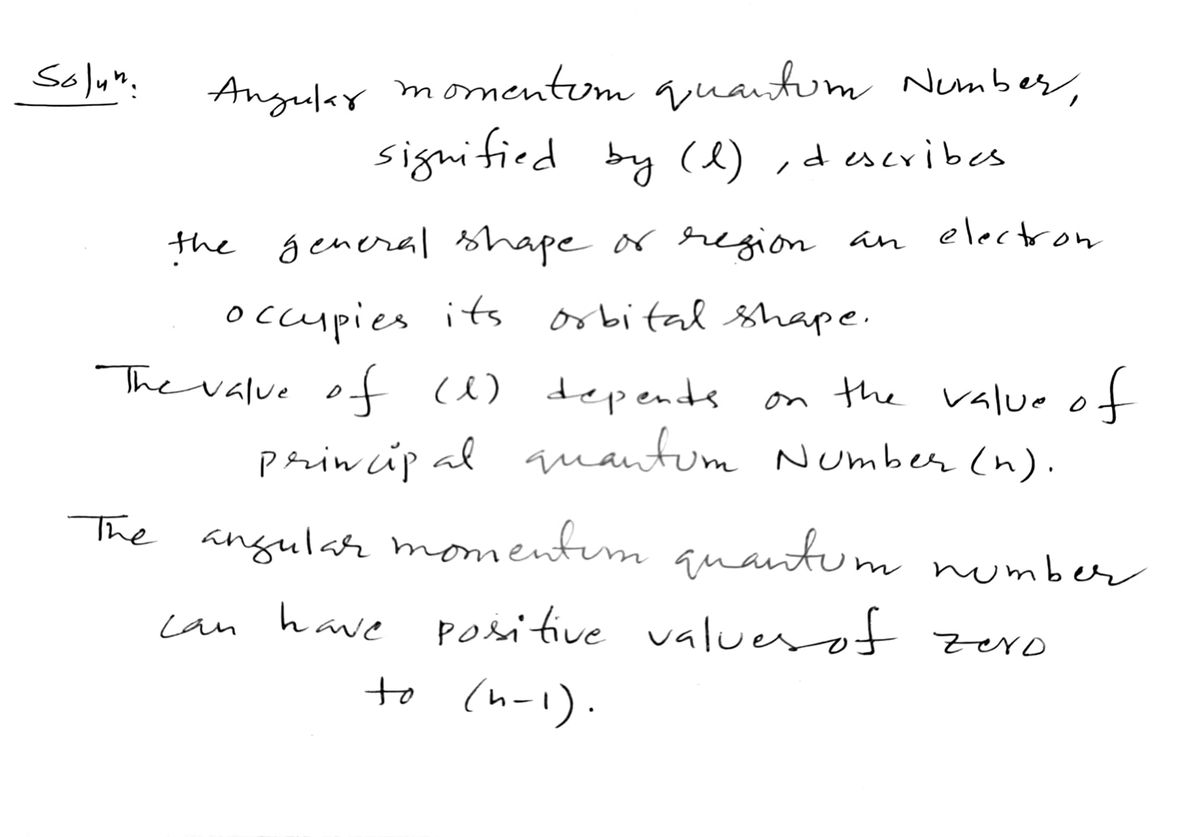Chemistry
10th Edition
ISBN:9781305957404
Author:Steven S. Zumdahl, Susan A. Zumdahl, Donald J. DeCoste
Publisher:Steven S. Zumdahl, Susan A. Zumdahl, Donald J. DeCoste
Chapter1: Chemical Foundations
Section: Chapter Questions
Problem 1RQ: Define and explain the differences between the following terms. a. law and theory b. theory and...
Related questions
Concept explainers
Atomic Structure
The basic structure of an atom is defined as the component-level of atomic structure of an atom. Precisely speaking an atom consists of three major subatomic particles which are protons, neutrons, and electrons. Many theories have been stated for explaining the structure of an atom.
Shape of the D Orbital
Shapes of orbitals are an approximate representation of boundaries in space for finding electrons occupied in that respective orbital. D orbitals are known to have a clover leaf shape or dumbbell inside where electrons can be found.
Question
100%

Transcribed Image Text:**Question:**
What is the value of the orbital angular momentum quantum number \( l \) for the 3d atomic orbital?
- ( ) 3
- ( ) -1
- ( ) 2
- ( ) -2
- ( ) 1
**Explanation:**
The orbital angular momentum quantum number \( l \) corresponds to the subshell of an atomic orbital. For the 3d orbital, the value of \( l \) is 2, as it corresponds to the d subshell.

Transcribed Image Text:**Quantum Mechanics: Orbital Angular Momentum**
**Question:**
What values of the orbital angular momentum quantum number \( l \) are allowed in the \( n = 3 \) shell?
**Options:**
1. \( l = 1, 2, 3 \)
2. \( l = 0, 1, 2, 3 \)
3. \( l = -3, -2, -1, 0, 1, 2, 3 \)
4. \( l = 0, 1, 2 \)
5. \( l = -2, -1, 0, 1, 2 \)
**Explanation:**
In quantum mechanics, the orbital angular momentum quantum number \( l \) can take values from 0 to \( n-1 \), where \( n \) is the principal quantum number. For the \( n = 3 \) shell, the possible values for \( l \) are 0, 1, and 2. Therefore, the correct answer is option 4: \( l = 0, 1, 2 \).
Expert Solution
Step 1

Step by step
Solved in 2 steps with 2 images

Knowledge Booster
Learn more about
Need a deep-dive on the concept behind this application? Look no further. Learn more about this topic, chemistry and related others by exploring similar questions and additional content below.Recommended textbooks for you

Chemistry
Chemistry
ISBN:
9781305957404
Author:
Steven S. Zumdahl, Susan A. Zumdahl, Donald J. DeCoste
Publisher:
Cengage Learning

Chemistry
Chemistry
ISBN:
9781259911156
Author:
Raymond Chang Dr., Jason Overby Professor
Publisher:
McGraw-Hill Education

Principles of Instrumental Analysis
Chemistry
ISBN:
9781305577213
Author:
Douglas A. Skoog, F. James Holler, Stanley R. Crouch
Publisher:
Cengage Learning

Chemistry
Chemistry
ISBN:
9781305957404
Author:
Steven S. Zumdahl, Susan A. Zumdahl, Donald J. DeCoste
Publisher:
Cengage Learning

Chemistry
Chemistry
ISBN:
9781259911156
Author:
Raymond Chang Dr., Jason Overby Professor
Publisher:
McGraw-Hill Education

Principles of Instrumental Analysis
Chemistry
ISBN:
9781305577213
Author:
Douglas A. Skoog, F. James Holler, Stanley R. Crouch
Publisher:
Cengage Learning

Organic Chemistry
Chemistry
ISBN:
9780078021558
Author:
Janice Gorzynski Smith Dr.
Publisher:
McGraw-Hill Education

Chemistry: Principles and Reactions
Chemistry
ISBN:
9781305079373
Author:
William L. Masterton, Cecile N. Hurley
Publisher:
Cengage Learning

Elementary Principles of Chemical Processes, Bind…
Chemistry
ISBN:
9781118431221
Author:
Richard M. Felder, Ronald W. Rousseau, Lisa G. Bullard
Publisher:
WILEY